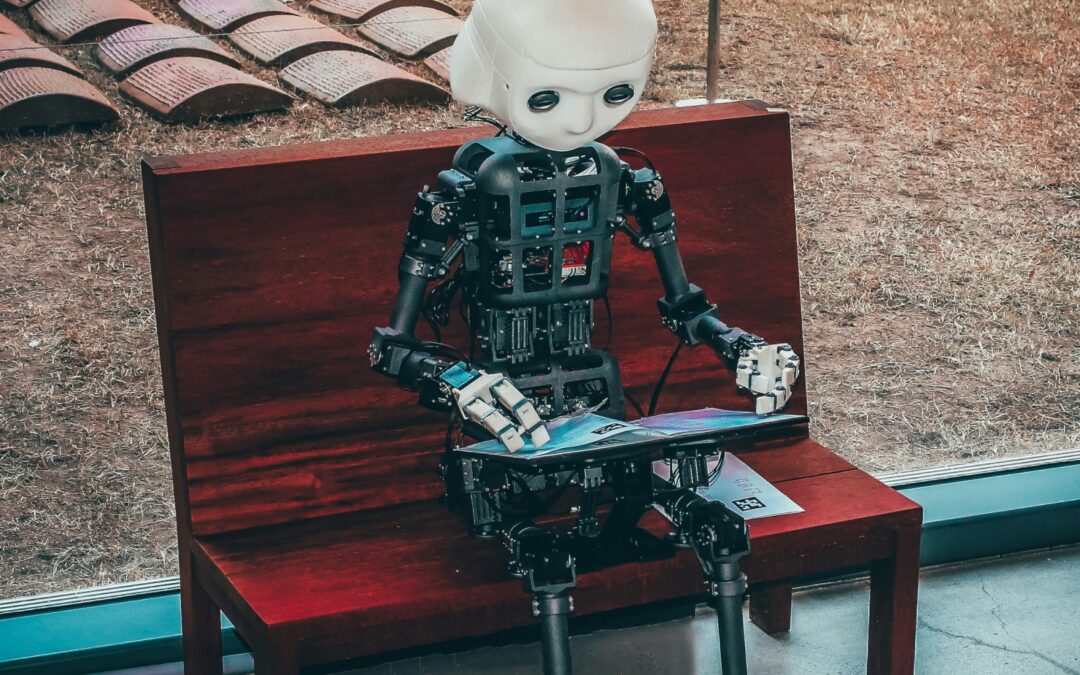
by Robyn Bolton | Jan 15, 2025 | Innovation, Leadership, Stories & Examples
I firmly believe that there are certain things in life that you automatically say Yes to. You do not ask questions or pause to consider context. You simply say Yes:
- Painkillers after a medical procedure
- Warm blankets
- The opportunity to listen to brilliant people talk about things that fascinate them.
So, when asked if I would like to attend an Executive Briefing curated by MIT’s Industrial Liaison Program, I did not ask questions or pause to check my calendar. I simply said Yes.
I’m extremely happy that I did because what I heard blew my mind.
Lean is the enemy of learning
When Ben Armstrong, Executive Director of MIT’s Industrial Performance Center and Co-Lead of the Work of the Future Initiative, said, “To produce something new, you need to create a lot of waste,” I nearly lept out of my chair, raised my arms, and shouted “Amen brother!”
He went on to tell the story of a meeting between Elon Musk and Toyota executives shortly after Musk became CEO. Toyota executives marveled at how quickly Tesla could build an EV and asked Musk for his secret. Musk gestured around the factory floor at all the abandoned hunks of metal and partially built cars and explained that, unlike Toyota, which prided itself on being lean and minimizing waste, Tesla engineers focused on learning – and waste is a required part of the process.
We decide with our hearts and justify with our heads – even when leasing office space
John E. Fernández, Director of MIT’s Environmental Solutions Initiative, shared an unexpected insight about selling sustainable buildings effectively. Instead of hard numbers around water and energy cost savings, what convinces companies to pay the premium for Net Zero environments is prestige. The bragging rights of being a tenant in Winthrop Center, Boston’s first-ever Passive House office building, gave developers a meaningful point of differentiation and justified higher-than-market-rate rents to future tenants like McKinsey and M&T Bank.
49% of companies are Silos and Spaghetti
I did a hard eye roll when I saw Digital Transformation on the agenda. But Stephanie Woerner, Principal Research Scientists and Executive Director for MIT’s Center for Information Systems Research, proved me wrong by explaining that Digital Transformation requires operational excellence and customer-focused innovation.
Her research reveals that while 26% of companies have evolved to manage both innovation and operations, operate with agility, and deliver great customer experiences, nearly half of companies are stuck operating in silos and throwing spaghetti against the wall. These “silo and spaghetti companies” are often product companies rife with complex systems and processes that require and reward individual heroics to make progress.
What seems like the safest option is the riskiest
How did 26% of companies transform while the rest stayed stuck or made little progress? The path forward isn’t what you’d expect. Companies that go all-in on operational excellence or customer innovation struggle to shift focus and work in the other half of the equation. But doing a little bit of each is even more risky because the companies often wait for results from one step before taking the next. The result is a never-ending transformation slog that is eventually abandoned.
Academia is full of random factoids
They’re not random to the academics, but for us civilians, they’re mainly helpful for trivia night:
- 50% of US robots are used in the automotive industry
- <20% of manufacturing job descriptions require digital skills (yes, that includes MS Office)
- Data centers will account for 8-21% of global energy demand by 2030
- Energy is 10% of the cost of running a data center but 90% of the cost of mining bitcoin
- Cities take up 3% of the earth’s surface, contain 33% of the population, account for 70% of global electricity consumption, and are responsible for 75% of CO2 emissions
Why say Yes
When brilliant people talk about things they find fascinating, it’s often because those things challenge conventional wisdom. The tension between lean efficiency and innovative learning, the role of emotion in business decisions, and the risks of playing it too safe all point to a fascinating truth: sometimes the most counterintuitive path forward is the most successful.
How have you seen this play out in your work?

by Robyn Bolton | Nov 12, 2024 | Customer Centricity, Leadership, Stories & Examples
“Now I know why our researchers are so sad.”
Teaching at The Massachusetts College of Art and Design (MassArt) offers a unique perspective. By day, I engage with seasoned business professionals. By night, I interact with budding designers and artists, each group bringing vastly different experiences to the table.
Customer-centricity is the hill I will die on…
In my Product Innovation Lab course, students learn the innovation process and work in small teams to apply those lessons to the products they create.
We spend the first quarter of the course to problem-finding. It’s excruciating for everyone. Like their counterparts in business and engineering, they’re bursting with ideas, and they hate being slowed down. Despite data proving that poor product-market fit a leading cause of start-up failure and that 54% of innovations launched by big companies fail to reach $1M in sales (a paltry number given the scale of surveyed companies), they’re convinced their ideas are flawless.
We spend two weeks exploring Jobs to be Done and practicing interviewing techniques. But their first conversations sound more like interrogations than anything we did in class.
They return from their interviews and share what they learned. After each insight, I ask, “Why is that?” or “Why is that important?
Amazingly, they have answers.
While their first conversations were interrogations, once the nervousness fades, they remember their training, engage in conversations, and discover surprising and wonderful answers.
Yet the still prioritize the answers to “What” over answers to “Why?”
…Because it’s the hill that will kill me.
Every year, this cycle repeats. This year, I finally asked why, after weeks of learning that the answers to What questions are almost always wrong and Why questions are the only path to the right answers (and differentiated solutions with a sustainable competitive advantage), why do they still prioritize the What answers?
The answer was a dagger to my heart.
“That’s what the boss wants to know,” a student explained. “Bosses just want to know what we need to build so they can tell engineering what to make. They don’t care why we should make it or whether it’s different. In fact, it’s better if it’s not different.”
I tried to stay professional, but there was definitely a sarcastic tone when I asked how that was working.
“We haven’t launched anything in 18 months because no one likes what we build. We spend months on prototypes, show them to users, and they hate it. Then, when we ask the researchers to do more research because their last insights were wrong, they get all cra….OOOOHHHHHHHH…..”
(insert clouds parting, beams of sunlight shining down, and a choir of angels here)
“That’s why the researchers are so sad all the time! They always try to tell us the “Whys” behind the “Whats” but no one wants to hear it. We just want to know what to build to get to work. But we could create something people love if we understood why today’s things don’t work!”
Honestly, I didn’t know whether to drop the mic in triumph or flip the table in rage.
Ignorance may be bliss but obsolesce is not
It’s easy to ignore customers.
To send them surveys with pre-approved answers choices that can be quickly analyzed and neatly presented to management. To build exactly what customers tell you to build, even though you’re the expert on what’s possible and they only know what’s needed.
It’s easy to point to the surveys and prototypes and claim you are customer-centric. If only the customers would cooperate.
It’s much harder to listen to customers. To ask questions, listen to answers you don’t want to hear, and repeat those answers to more powerful people who want to hear them even less. To have the courage to share rough prototypes and to take the time to be curious when customers call them ugly.
So, if you want to be happy, keep pretending to care about your customers.
Pretty soon, you won’t have any left to bother you.

by Robyn Bolton | Aug 18, 2024 | Customer Centricity, Innovation, Tips, Tricks, & Tools
AI is everywhere: in our workplaces, homes, schools, art galleries, concert halls, and even neighborhood coffee shops. We can’t seem to escape it. Some hope it will unlock our full potential and usher in an era of creativity, prosperity, and peace. Others worry it will eventually replace us. While both outcomes are extreme, if you’ve ever used AI to conduct research with synthetic users, the idea of being “replaced” isn’t so wild.
For the past month, I’ve beta-tested Crowdwave, an AI research tool that allows you to create surveys, specify segments of respondents, send the survey to synthetic respondents (AI-generated personas), and get results within minutes.
Sound too good to be true?
Here are the results from my initial test:
- 150 respondents in 3 niche segments (50 respondents each)
- 51 questions, including ten open-ended questions requiring short prose responses
- 1 hour to complete and generate an AI executive summary and full data set of individual responses, enabling further analysis
The Tool is Brilliant
It took just one hour to gather data that traditional survey methods require a month or more to collect, clean, and synthesize. Think of how much time you’ve spent waiting for survey results, checking interim data, and cleaning up messy responses. I certainly did and it made me cry.
The qualitative responses were on-topic, useful, and featured enough quirks to seem somewhat human. I’m pretty sure that has never happened in the history of surveys. Typically, respondents skip open-ended questions or use them to air unrelated opinions.
Every respondent completed the entire survey! There is no need to look for respondents who went too quickly, chose the same option repeatedly, or abandoned the effort altogether. You no longer need to spend hours cleaning data, weeding out partial responses, and hoping you’re left with enough that you can generate statistically significant findings.
The Results are Dangerous
When I presented the results to my client, complete with caveats about AI’s limitations and the tool’s early-stage development, they did what any reasonable person would do – they started making decisions based on the survey results.
STOP!
As humans, we want to solve problems. In business, we are rewarded for solving problems. So, when we see something that looks like a solution, we jump at it.
However, strategic or financially significant decisions should never rely ona single data source. They are too complex, risky, and costly. And they definitely shouldn’t be made based on fake people’s answers to survey questions!
They’re Also Useful.
Although the synthetic respondents’ data may not be true, it is probably directionally correct because it is based on millions and maybe billions of data points. So, while you shouldn’t make pricing decisions based on data showing that 40% of your target consumers are willing to pay a 30%+ premium for your product, it’s reasonable to believe they may be willing to pay more for your product.
The ability to field an absurdly long survey was also valuable. My client is not unusual in their desire to ask everything they may ever need to know for fear that they won’t have another chance to gather quantitative data (and budgets being what they are, they’re usually right). They often ignore warnings that long surveys lead to abandonment and declining response quality. With AI, we could ask all the questions and then identify the most critical ones for follow-up surveys sent to actual humans.
We Aren’t Being Replaced, We’re Being Spared
AI consumer research won’t replace humans. But it will spare us the drudgery of long surveys filled with useless questions, months of waiting for results, and weeks of data cleaning and analysis. It may just free us up to be creative and spend time with other humans. And that is brilliant.

by Robyn Bolton | Apr 27, 2024 | Customer Centricity, Leadership, Stories & Examples
It’s easy to get caught up in the hunt for unique insights that will transform your business, conquer your competition, and put you on an ever-accelerating path to growth. But sometimes, the most valuable insights can come from listening to customers in their natural environment. That’s precisely what happened when I eavesdropped on a conversation at a local pizza joint. What I learned could be worth millions to your business.
A guy walked into a pizza place.
Last Wednesday, I met a friend for lunch. As usual, I was unreasonably early to the local wood-fired pizza joint, so I settled into my chair, content to spend time engaged in one of my favorite activities – watching people and eavesdropping on their conversations.
Although the restaurant is on the main street of one of the wealthier Boston suburbs, it draws an eclectic crowd, so I was surprised when a rather burly man in a paint-stained hoodie flung open the front door. As he stomped to the take-out order window, dust fell from his shoes, and you could hear the clanging of tools in his tool belt. He placed his order and thumped down at the table next to me.
A Multi-Million Dollar Chat
He pulled out his cell phone and made a call. “Hey, yeah, I’m at the pizza place, and they need your help. Yeah, they hate their current system, but they don’t have the time to figure out a new one or how to convert. Yeah, ok, I’ll get his number. Ok if I give him yours. Great. Thanks.”
A few minutes later, his order was ready, and the manager walked over with his pizza.
Hoodie-guy: “Hey, do you have a card?”
Manager: “No, I don’t. Something I can help you with?”
H: “I just called a friend of mine. He runs an IT shop, and I told him you’re using the RST restaurant management system, and you hate it…”
M: “I hate it so much…”
H: “So my buddy’s business can help you change it. He’s helped other restaurants convert away from RST, and he’d love to talk to you or the owner.”
M: “I’m one of the co-owners, and I’d love to stop using RST, but we use it for everything – our website, online ordering, managing our books, everything. I can’t risk changing.”
H: “That’s the thing, my friend does it all for you. He’ll help you pick the new system, set it up, migrate you from the other system, and ensure everything runs smoothly. You have nothing to worry about.”
M: “That would be amazing. Here’s my direct line. Have him give me a call. And if he’s good, I can guarantee you that every other restaurant on this street will change, too. We all use RST, and we all hate it. We even talked about working together to find something better, but no one had time to figure everything out.”
They exchanged numbers, and the hoodie guy walked out with his pizza. The manager/owner walked back to the open kitchen, told his staff about the conversation, and they cheered. Cheered!
Are You Listening?
In just a few minutes of eavesdropping, I uncovered a potential goldmine for a B2B business – 15 frustrated customers, all desperate to switch from a system they hate but unable to do so due to time and resource constraints. The implications are staggering – an entire local market worth tens of millions of dollars ripe for the taking simply by being willing to listen and offer a solution.
As a B2B leader, the question is: are you truly tapping into the insights right in front of you? When was the last time you left your desk, observed your customers in their natural habitat, and listened to their unvarnished feedback? If you’re not doing that, you’re missing out on opportunities that could transform your business.
The choice is yours. Will you stay in your office and rely on well-worn tools, or venture into the wild and listen to your customers? Your answer could be worth millions.

by Robyn Bolton | Mar 5, 2024 | Customer Centricity, Tips, Tricks, & Tools
AI is NOT a substitute for person-to-person discovery conversations or Jobs to be Done interviews.
But it is a freakin’ fantastic place to start…if you do the work before you start.
Get smart about what’s possible
When ChatGPT debuted, I had a lot of fun playing with it, but never once worried that it would replace qualitative research. Deep insights, social and emotional Jobs to be Done, and game-changing surprises only ever emerge through personal conversation. No matter how good the Large Language Model (LLM) is, it can’t tell you how feelings, aspirations, and motivations drive their decisions.
Then I watched JTBD Untangled’s video with Evan Shore, WalMart’s Senior Director of Product for Health & Wellness, sharing the tests, prompts, and results his team used to compare insights from AI and traditional research approaches.
In a few hours, he generated 80% of the insights that took nine months to gather using traditional methods.
Get clear about what you want and need.
Before getting sucked into the latest shiny AI tools, get clear about what you expect the tool to do for you. For example:
- Provide a starting point for research: I used the free version of ChatGPT to build JTBD Canvas 2.0 for four distinct consumer personas. The results weren’t great, but they provided a helpful starting point. I also like Perplexity because even the free version links to sources.
- Conduct qualitative research for me: I haven’t used it yet, but a trusted colleague recommended Outset.ai, a service that promises to get to the Why behind the What because of its ability to “conduct and synthesize video, audio, and text conversations.”
- Synthesize my research and identify insights: An AI platform built explicitly for Jobs to be Done Research? Yes, please! That’s precisely what JobLens claims to be, and while I haven’t used it in a live research project, I’ve been impressed by the results of my experiments. For non-JTBD research, Otter.ai is the original and still my favorite tool for recording, live transcription, and AI-generated summaries and key takeaways.
- Visualize insights: Mural, Miro, and FigJam are the most widely known and used collaborative whiteboards, all offering hundreds of pre-formatted templates for personas, journey maps, and other consumer research templates. Another colleague recently sang the praises of theydo, an AI tool designed specifically for customer journey mapping.
Practice your prompts
“Garbage in. Garbage out.” Has never been truer than with AI. Your prompts determine the accuracy and richness of the insights you’ll get, so don’t wait until you’ve started researching to hone them. If you want to start from scratch, you can learn how to write super-effective prompts here and here. If you’d rather build on someone else’s work, Brian at JobsLens has great prompt resources.
Spend time testing and refining your prompts by using a previous project as a starting point. Because you know what the output should be (or at least the output you got), you can keep refining until you get a prompt that returns what you expect. It can take hours, days, or even weeks to craft effective prompts, but once you have them, you can re-use them for future projects.
Defend your budget
Using AI for customer research will save you time and money, but it is not free. It’s also not just the cost of the subscription or license for your chosen tool(s).
Remember the 80% of insights that AI surfaced in the JTBD Untangled video? The other 20% of insights came solely from in-person conversations but comprised almost 100% of the insights that inspired innovative products and services.
AI can only tell you what everyone already knows. You need to discover what no one knows, but everyone feels. That still takes time, money, and the ability to connect with humans.
Run small experiments before making big promises
People react to change differently. Some will love the idea of using AI for customer research, while others will resist with. Everyone, however, will pounce on any evidence that they’re right. So be prepared. Take advantage of free trials to play with tools. Test tools on friends, family, and colleagues. Then underpromise and overdeliver.
AI is a starting point. It is not the ending point.
I’m curious, have you tried using AI for customer research? What tools have you tried? Which ones do you recommend?




